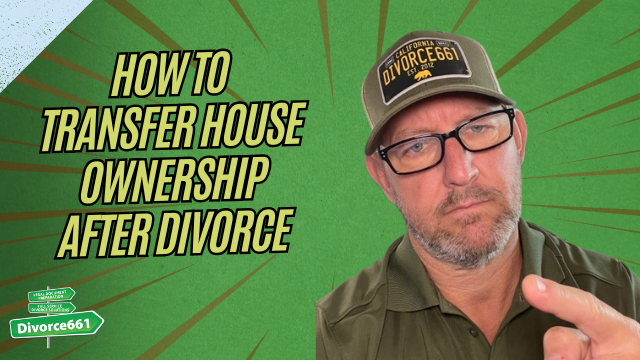How To Transfer House Ownership After Divorce
Dividing property ownership after a divorce can often be a complex and frustrating process. If you and your ex-spouse are dealing with a shared home, understanding the options for transferring ownership is crucial. In this guide, Tim Blankenship from Divorce661 breaks down the practical steps and legal considerations involved in transferring house ownership after divorce, helping you navigate this challenging phase with clarity and confidence.
Understanding Your Options for the House After Divorce
When a divorce is finalized, one of the key decisions involves what happens to the marital home. There are generally three paths you can take:
- One Party Keeps the House: One spouse is awarded the house, usually accompanied by refinancing to remove the other party from the mortgage and title.
- Both Parties Keep the House in Their Names: Sometimes, both ex-spouses remain on the title without refinancing, which can lead to complications down the line.
- The House is Sold: The property is sold, and proceeds are divided according to the divorce agreement or court order.
The most straightforward option often involves refinancing the mortgage so the spouse who keeps the house can remove the other from both the loan and the title.
When Refinancing Isn’t an Option: The Role of a Quit Claim Deed
But what happens if refinancing isn’t possible or desired? You can still transfer ownership using a legal instrument called a quit claim deed. This deed allows one party to relinquish their ownership interest in the property, effectively removing their name from the title.
To complete this process, the spouse who is giving up ownership must sign the quit claim deed, which is then filed with the county recorder’s office where the property is located. This step officially updates the public record to reflect the change in ownership.
Challenges When the Other Spouse Refuses to Sign
A common complication arises when the spouse who is supposed to quit claim the property refuses to sign the deed. Even if the court has awarded the house to one party, the other spouse’s signature is typically required to update the title.
In such cases, here’s what you can do:
- File a Motion with the Court: Request the court to authorize signing the quit claim deed on behalf of the uncooperative spouse.
- Leverage the Court Order: Since the judge has already awarded the house to one party, the court can step in to enforce this decision by signing the deed or instructing the clerk to do so.
- Record the Deed with the County: Once the court signs, you can file the deed with the county, officially removing the other spouse from the title.
Keep in mind that the exact procedures and requirements may vary depending on your county, so consulting with a local legal expert or title company is advisable.
Final Thoughts
Transferring house ownership after divorce can be straightforward if both parties cooperate, but it often requires navigating legal hurdles when they don’t. Utilizing a quit claim deed is a practical solution when refinancing isn’t possible, but it hinges on getting the necessary signatures or court intervention.
Remember, the goal is to ensure that the court’s property division order is properly reflected in the title records, giving one party clear ownership and peace of mind moving forward.
If you’re in the middle of this process, understanding these options and steps can save you time, money, and stress. For more detailed guidance on divorce and property division, visit Divorce661.com.
— Tim Blankenship, Divorce661

